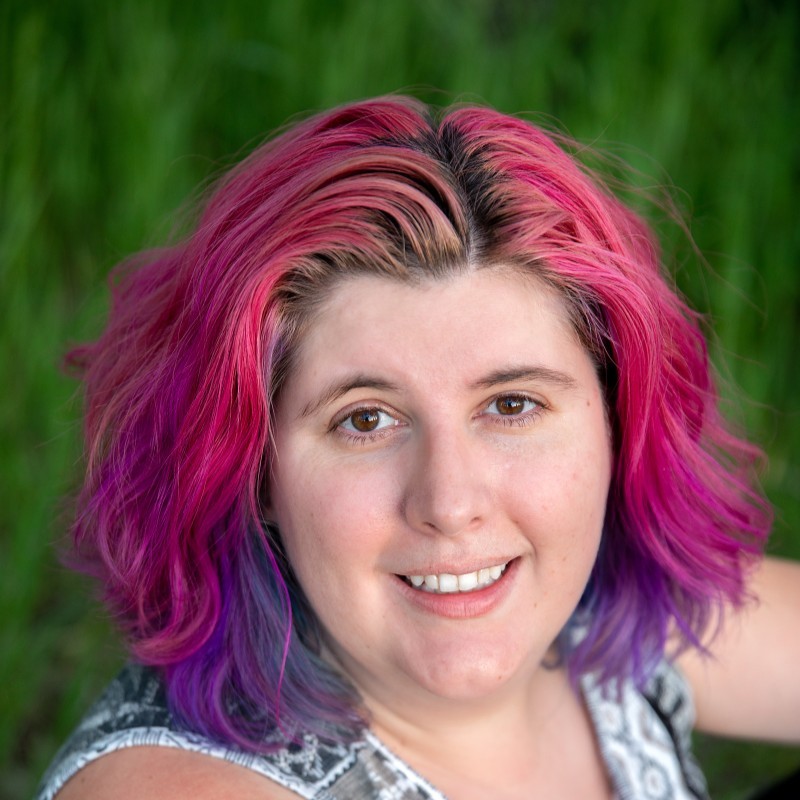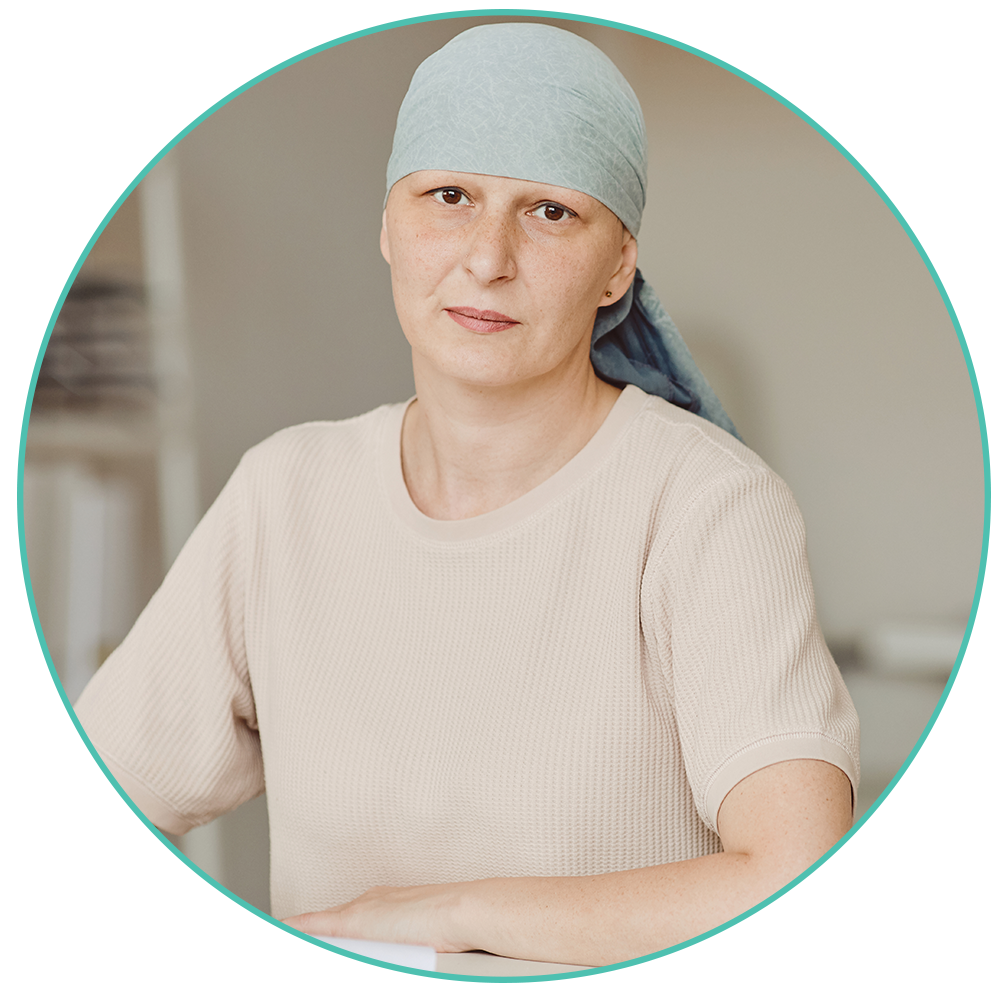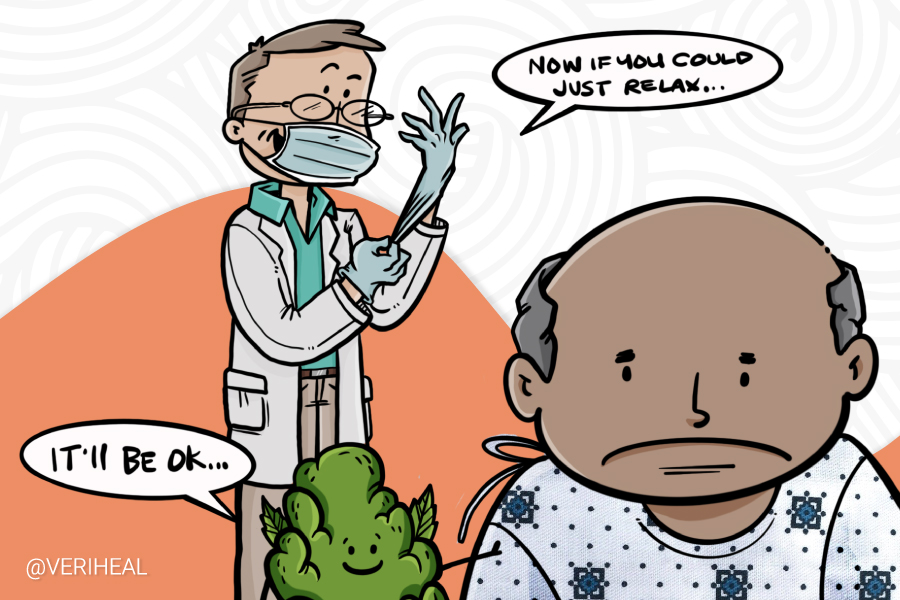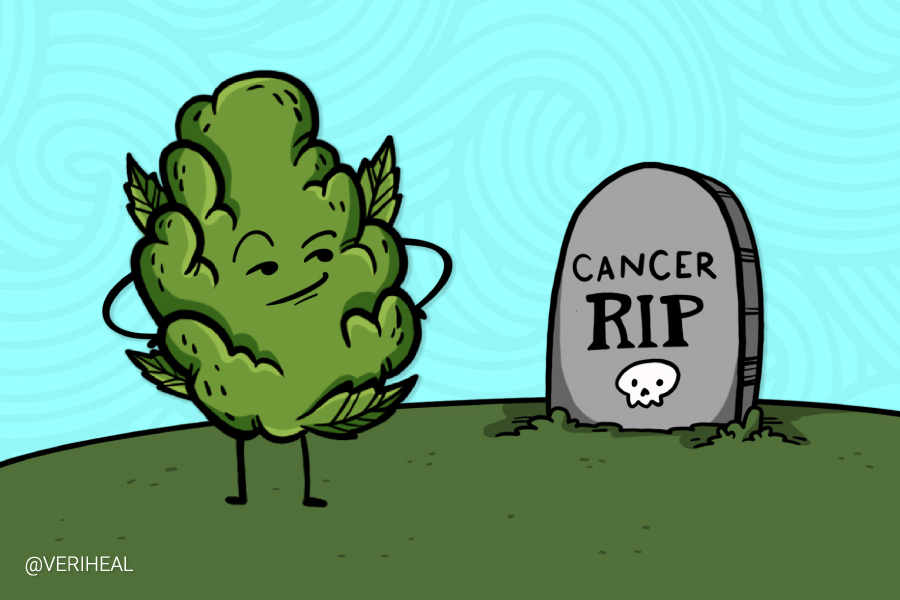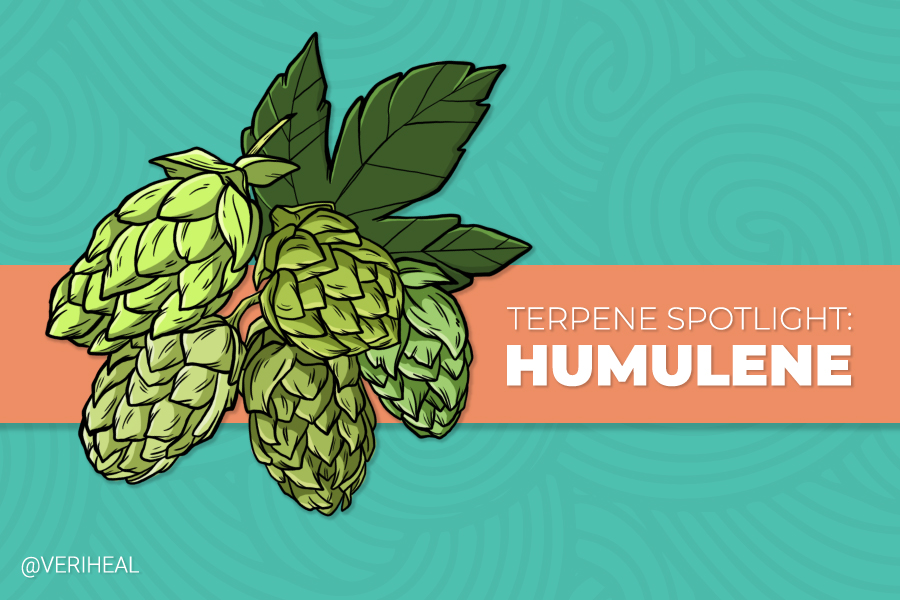Understanding the Use of Cannabis for Cancer Symptoms
- Cannabis Delivery Methods and Cancer-Related Symptoms
- Can Cannabinoids Slow Cancer Growth?
- Understanding Cancer Symptoms and How Cannabis Can Help
- Cannabinoid-Based Pharmaceuticals
- The Oncologist’s Perspective
Using medicinal cannabis while having cancer can help with the following cancer-related symptoms (1):
- Pain
- Neuropathy or nerve damage
- Nausea
- Loss of appetite
- Cachexia or “wasting” syndrome, which is extreme weight loss and muscle loss
- Depression (6)
Note that there is no evidence that cancer can be completely cured by cannabis. Individualized cancer treatment plans should always involve careful, shared decisions and regular follow up between you and your healthcare team. Cannabinoids may be a useful adjunct but cannot replace established treatments for cancer.
Cannabis Delivery Methods and Cancer-Related Symptoms
Cannabis research has shown the potential to help with a variety of cancer-related issues as seen in the information below from Opportunities for Cannabis in Supportive Care in Cancer (6). It is important to note that while more clinical trials are still needed, this information serves as a good starting point when considering using cannabis products for help with symptoms and the side effects of radiation or chemotherapy.
Smoking or Vaporizing
- Peak concentrations begin within 2-30 minutes after inhaling and can last from 30 minutes to 4 hours
- Fast alleviation of symptoms
- Useful for when vomiting is occurring, and a patient can’t keep food down
- May cause lung irritation in patients with breathing issues such as asthma or lung cancer
- Patients with thoracic cancer or lung cancer may need to avoid
- Smoking can deliver free radicals found in smoke caused by combustion and carry negative health risks (7)
- Increased risk for infection (7)
Pills, Edibles, or Tinctures
- The bioactive compounds circulate 1-6 hours after administration
- Slower onset but longer-lasting over smoking or vaping
- More intensified cannabis side effects can be experienced
- Can be harder to dose because Δ9-tetrahydrocannabinol (THC) has low and variable bioavailability (6-20%)
Lotions, Creams, or Ointments
- Unknown bioavailability and effectiveness
- Can deliver cannabinoids directly to the skin and the target pain site
Considerations to Keep in Mind
It is important to speak with your oncologist before beginning to use cannabis for cancer, because there can be serious side effects and drug interactions with other medications that you take, especially chemotherapy and cholesterol drugs. Side effects may include sleepiness, mood changes, decreased blood pressure, and heart rate changes (1). In addition, some conditions may prevent you from using it such as asthma or certain types of cancer (6).
Can Cannabinoids Slow Cancer growth?
Research in both animal and human models suggests that cannabis may have anti-neoplastic properties, or the ability to slow down or stop the growth of cancerous tumors (1). Researchers believe that marijuana and its various cannabinoids have the potential to be used as anticancer agents that may have benefits when used in combination with traditional cancer treatments (14).
This important research shows us that the medical use of cannabis has the potential to reverse cancer’s ability to override apoptosis, or programmed cell death, as well as combat tumor cell invasion and prevent or slow cancer cells from metastasizing or spreading (9). Research has shown that activating the endocannabinoid system causes cancer cell death in glioma brain or spinal tumors, melanoma (skin cancer), pancreatic cancer, and cancer that begins in liver cells (9)(14).
However, in some types of cancer, such as HER2 positive breast cancer, cannabinoids that activate cannabinoid receptor CB2 of the endocannabinoid system such as cannabidiol (CBD) may actually do the opposite and increase tumor growth (14). In addition, ovarian cancer is also CBD sensitive and may not respond positively to it. Kaposi’s sarcoma seems to have the same negative response of furthering cancer growth to higher amounts of THC.
It is important to note that not all types of cancer are improved with the introduction of THC and CBD, which is another reason why it is important to talk about cannabis use with the oncologist who is treating your cancer.
Understanding Cancer Symptoms and How Cannabis Can Help
Pain
Patients with cancer can experience chronic pain, which is consistent and lasts three months or longer, as well as intermittent pain, and breakthrough pain that isn’t controlled through regular pain medications. This pain can be caused by a tumor itself when it presses into healthy tissue as it grows or it could also be caused by treatment with chemotherapy or after surgery (2).
Though there are not many studies that have focused on utilizing cannabis for cancer-related pain in a clinical setting, there is some anecdotal evidence that says it may be helpful, but not enough evidence to suggest clinical use (11). However, cancer.gov suggests that cannabis use may help patients who suffer from chronic pain relating to cancer.
One 2010 study from the Journal of Pain and Symptom Management supports the need for more clinical research into using cannabis for cancer-related pain. This multicenter, double-blind study focused on the effectiveness of 1:1 THC to CBD cannabis extract and THC extract for cancer patients with intractable pain. This study by Johnson et. Al. investigated the symptoms of 177 patients who still had pain despite opioid use. The patients receiving the THC-only extract did not show significant improvement over the placebo, but the patients who were taking a combination of THC and CBD showed a 30 percent reduction in baseline pain scores (5).
Neuropathy
Many cancer patients struggle with neuropathy, or nerve damage, that can be caused by chemotherapy, surgery, radiation treatments, or tumors that press on or penetrate a nerve. Neuropathy exhibits itself in several different ways including burning or tingling pain, loss of sensation, weakness, sharp and shooting pain, balance difficulties, and difficulty picking up objects (4). Through modulation of the body’s immune response, medical marijuana has been shown to reduce systemic inflammation caused by cancer (6).
In a 2013 double-blind and placebo-controlled study, researchers examined patients who still experienced neuropathy pain with traditional methods. 39 patients were given a 3.53% vaping cannabis dose, 1.29% vaping dose, or a placebo cannabis dose. This study found that there was no significant difference in pain with the active cannabis dosages, but there was a 30% reduction in neurologic pain in patients taking the cannabis doses compared to the placebo. These patients also did not experience significant psychoactive effects from cannabis (10).
Nausea
Some chemotherapy treatments may cause nausea and vomiting in some patients. It is important to communicate with your doctor if you have any queasiness or nausea, so that they can help improve those side effects of treatment. If you are receiving chemotherapy in pill form, it is important to follow your doctor’s directions on when to take your chemotherapy and anti-nausea medications (8).
Even though chemotherapy is meant to destroy cancer cells, sometimes it can irritate the lining of the mouth, esophagus, and stomach, which can be irritated by certain cancer medications and cause nausea. In addition, the body and brain will sometimes identify the chemotherapy as a foreign substance and release the neurotransmitters serotonin and substance P, triggering nausea and vomiting (8). In some studies THC was shown to modulate the release of substance P and reduce nausea, acting similar to an antiemetic (6).
The most widely prescribed class of antiemetics, or anti-nausea medications, are 5-hydroxytryptamine 3 (5-HT3) receptor antagonists. 5-HT3 receptors line the gastrointestinal tract and bind with extra serotonin that the brain releases after chemotherapy, causing nausea. Research has shown that cannabis inhibits these receptors like the anti-nausea medications. CBD is specifically shown to act as a modulator to 5-HT3 receptors by reducing the serotonin that binds to them and reducing nausea (6).
Cachexia
Cachexia caused by cancer is a wasting syndrome that causes weight loss, anorexia, loss of appetite, lack of energy, weakness and loss of strength, and anemia (the inability of blood cells to properly transport oxygen to the body). Cachexia often happens during advanced stages of cancer and can lead to death after the body eats muscle and other tissues. It inhibits the body from fighting against infection and makes the body too weak to go through chemotherapy or radiation treatments (3).
The endocannabinoid system, once activated by delta-9-tetrahydrocannabinol, can help increase appetite through the hypothalamus, the hindbrain, limbic system, intestinal tract, and adipose tissue. Marijuana use can also help with appetite issues in patients with head and neck cancers that suffer from dysgeusia, or distortion of taste (6).
There is research that supports the potential benefits of medical cannabis for the treatment of cachexia. One study discussed in a review published in the Journal of Cancer focused on the ability of cannabis to increase appetite in patients with cancer. The results were promising and showed that patients who received THC over the placebo experienced increased quality of life scores when it came to increased premeal appetite and food tasting better (9).
Cannabinoid-Based Pharmaceuticals
There are two prescription medications that contain THC and CBD called Dronabinol and Nabiximols. Dronabinol has been approved by the US Food and Drug Administration (FDA) and is a gelatin capsule containing THC. It has been approved to treat nausea and vomiting for patients undergoing chemotherapy. Dronabinol has been researched, but in cancer studies, it hasn’t been shown to work better than placebos or other drugs that are available for the same use (7).
The other THC and CBD-based medication available only by prescription, Nabiximols (Sativex), is a whole cannabis plant extract mouth spray. It is not currently approved in the United States, but it shows promise in relieving cancer pain that cannot be controlled through pain medications. Nabiximols has not been found to be useful in all studies, but more research is being conducted (7).
Nabilone, also known as Cesamet, is another medication that is similar to cannabis, but is man-made and does not contain any marijuana. Nabilone contains synthetic cannabinoids and is used to help cancer-related nausea and vomiting.
The Oncologist’s Perspective
In order to assess the perceived benefits of medical cannabis, a 2019 study published in the Journal of Pain and Symptom Management surveyed a group of 237 oncologists to see what they thought. This study focused on answers in three areas of cancer care that included questions relating to patients near the end of life, patients with early-stage cancer and cancer survivors (12).
Overall, 82.8% of oncologists interviewed agreed that cannabis use has end-of-life benefits for cancer patients. Most of these oncologists also reported that medical cannabis was at least as effective for increasing appetite and combating cachexia while only around 50% thought it was helpful for nausea and anxiety (12).
Note: Veriheal does not intend to give this as professional medical advice. Do not attempt to self-diagnose, or prescribe treatment based on the information provided on this page. Always consult a physician before making any decision on the treatment of a medical condition.
1. Arum, K. (n.d.). Medical Marijuana and Cancer. Retrieved December 05, 2020, from https://www.lungcancer.org/find_information/publications/328-medical_marijuana_and_cancer
2. Cubert, Kenneth H. (2017). Managing Cancer Pain. CancerCare. https://www.cancercare.org/publications/174-managing_cancer_pain
3. Dhanapal, R., Saraswathi, T., & Rajkumar, G. (2011). Cancer cachexia. Journal of Oral and Maxillofacial Pathology, 15(3), 257. https://www.ncbi.nlm.nih.gov/pmc/articles/PMC3227249/
4. Gowen, Krisstina. (2017). Understanding Peripheral Neuropathy. CancerCare. https://www.cancercare.org/publications/351-understanding_peripheral_neuropathy
5. Johnson, J. R., Burnell-Nugent, M., Lossignol, D., Ganae-Motan, E. D., Potts, R., & Fallon, M. T. (2010). Multicenter, double-blind, randomized, placebo-controlled, parallel-group study of the efficacy, safety, and tolerability of THC:CBD extract and THC extract in patients with intractable cancer-related pain. Journal of pain and symptom management, 39(2), 167–179. https://pubmed.ncbi.nlm.nih.gov/19896326/
6. Kleckner, A. S., Kleckner, I. R., Kamen, C. S., Tejani, M. A., Janelsins, M. C., Morrow, G. R., & Peppone, L. J. (2019). Opportunities for cannabis in supportive care in cancer. Therapeutic Advances in Medical Oncology, 11, 175883591986636. https://journals.sagepub.com/doi/full/10.1177/1758835919866362
7. Marijuana and Cancer. (2020, August 4). Retrieved December 05, 2020, from https://www.cancer.org/treatment/treatments-and-side-effects/complementary-and-alternative-medicine/marijuana-and-cancer.html
8. Swartzberg, Lee. (2020). Chemotherapy-Induced Nausea and Vomiting. CancerCare. https://www.cancercare.org/publications/7-chemotherapy-induced_nausea_and_vomiting
9. Wang, J., Wang, Y., Tong, M., Pan, H., & Li, D. (2019). New Prospect for Cancer Cachexia: Medical Cannabinoid. Journal of Cancer, 10(3), 716-720. https://www.ncbi.nlm.nih.gov/pmc/articles/PMC6360413/
10. Wilsey, B., Marcotte, T., Deutsch, R., Gouaux, B., Sakai, S., & Donaghe, H. (2013). Low-dose vaporized cannabis significantly improves neuropathic pain. The journal of pain : official journal of the American Pain Society, 14(2), 136–148. https://pubmed.ncbi.nlm.nih.gov/23237736/
11. Boland, E. G., Bennett, M. I., Allgar, V., & Boland, J. W. (2020). Cannabinoids for adult cancer-related pain: systematic review and meta-analysis. BMJ supportive & palliative care, 10(1), 14–24. https://pubmed.ncbi.nlm.nih.gov/31959586/
12. Braun, I. M., Blonquist, T. M., Campbell, E. G., Nayak, M. M., Bolcic-Jankovic, D., & Wright, A. A. (2019). Medical oncologists’ views on the utility of medical marijuana across the cancer trajectory. Journal of Pain and Symptom Management, 57(6). https://www.jpsmjournal.com/article/S0885-3924(19)30051-X/fulltext
13. Cannabis and Cannabinoids (pdq®)–patient version. (2021, March 26). Retrieved May 10, 2021, from https://www.cancer.gov/about-cancer/treatment/cam/patient/cannabis-pdq#link/_76
14. Velasco, G., Sánchez, C., & Guzmán, M. (2016). Anticancer mechanisms of cannabinoids. Current oncology (Toronto, Ont.), 23(2), S23–S32. https://www.ncbi.nlm.nih.gov/pmc/articles/PMC4791144/











